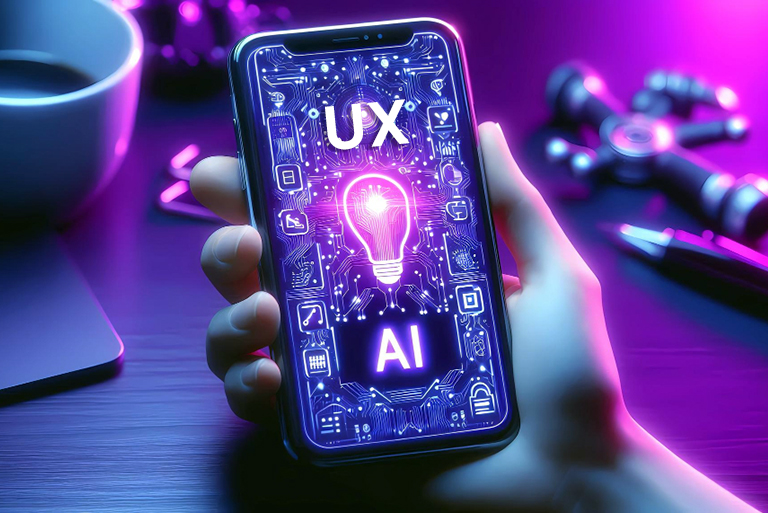Future-Proofing Your UX Strategy for AI-First Interactions

Your users already interact with AI before they meet you
Let’s be honest: your customers don’t “visit a website” anymore—they bounce between WhatsApp replies, intelligent assistants, AI-powered search, brand chatbots, and a mobile checkout that remembers them. That’s AI-first interaction in the real world: the conversation starts with an algorithm, not your homepage.
Here’s the rub for C-level leaders:
- Trust is wobbling. Only 42% of customers trust businesses to use AI ethically, down from last year. That’s a big red flag if you plan to automate more of your experience.
- Customer experience metrics are sliding across industries, so basic “AI for efficiency” won’t save a poor journey.
- In India and other mobile-first markets, messaging channels (e.g., WhatsApp) dominate service and sales; your stack must meet users where they already are.
If I were in your chair, I’d be asking: How do we design a UX strategy that stays ahead of this, keeps trust, and still grows leads and revenue?
The silent costs of getting AI UX wrong
- Trust tax: Consumers love convenience, but they’re more protective of data and don’t feel the value exchange is fair. Personalization feels better than ever, yet just 49% think companies use their data in a way that benefits them. That disconnect kills conversion and loyalty.
- Agent-washing risk: Many “agentic AI” projects are driven by hype. Gartner projects that over 40% of agentic AI projects will be scrapped by 2027 due to cost and unclear value. Translation: Poor framing and governance waste money.
- Compliance drag: India’s Digital Personal Data Protection (DPDP) Act, 2023 requires clear, plain-language consent, easy withdrawal, and human-readable notices—non-negotiable if you use AI to personalize or score leads.
- Hallucinations & reputation: If your AI’s answers deviate from script, users lose trust quickly. Mitigation requires retrieval-augmented generation (RAG), human validation, and audit trails—not just “a better model.”
A Trust-by-Design, RAG-powered, Channel-agnostic UX strategy
Here’s the simple lens we use with boards and founders:
- Lead with trust design
- Make AI visible: clearly show when a user is speaking to an agent/bot and offer a “human out” in one click. 71% of customers say human validation matters
- Use plain language consent and granular controls. DPDP calls for clarity and easy withdrawal; bake that into your flows and microcopy.
- Ground AI in your truth with RAG
- Connect the model to your policies, catalog, pricing, and help center so it cites sources and reduces hallucinations. RAG is the industry standard to minimize errors by grounding answers in enterprise knowledge.
- Design channel-agnostic journeys
- Treat web, app, WhatsApp, email, and voice as one continuous conversation. Zendesk highlights how regional preferences (e.g., WhatsApp in LATAM/India) force platforms to support broader, AI-enhanced interactions. Your UX should, too.
- Focus AI on moments that move revenue.
- Utilize AI where it directly eliminates friction, such as findability (semantic search), form completion, qualification triage, pricing/plan guidance, and recovery flows (cart/lead rescue). That’s where ROI shows up first.
- Measure what matters
- Tie every AI touchpoint to conversion, AOV, time-to-resolution, self-serve rate, and lead velocity. Don’t track “bot chats started”; track pipeline created and cost avoided.
What the data says right now

- Trust + transparency is the unlock. Consumers want AI that’s transparent and easy to escalate to humans; trust in ethical AI usage stands at 42%, with transparency/human validation being top trust builders.
- AI can deliver hard productivity gains. McKinsey estimates 30–45% productivity improvement in customer care with generative AI—savings you can reinvest in a better experience.
- ROI signals are positive. Zendesk reports that 90% of CX “trendsetters” see a positive ROI on agent AI tools; leaders expect efficiency from AI-powered interactions.
- Customer behavior is shifting fast. During the 2024 holiday season, AI-influenced shopping grew sharply; chatbot use rose 42% YoY, contributing to higher online sales.
- CX is fragile. Forrester reports CX effectiveness and ease slipped (2024), so automating a poor journey just scales pain. Fix the trip, then scale it with AI.
A 90-day, value-first roadmap (how UXGen Studio delivers)
You want outcomes, not theory. Here’s how we run fast, safe, and affordable AI-UX programs for portals and websites—keeping costs practical for Indian SMBs and mid-market teams while holding enterprise-grade standards.
Days 0–30 — Readiness & Trust Foundations
- AI-Journey Mapping: Identify 6–10 moments that block conversion (search, plan choice, forms, pricing, support).
- Data & Content Audit for RAG: Inventory FAQs, policies, product docs, and pricing—tag authoritative sources for grounding.
- Trust UX Kit: Add visible AI labels, “talk to human” affordances, confidence badges, and plain-language consent banners that meet DPDP standards (clear purpose, easy withdrawal).
- Success Metrics: Baseline CSAT, conversion, lead velocity, time-to-resolution, and deflection.
Days 31–60 — Quick-win AI that moves revenue
- AI Answers + Semantic Search (RAG): Launch an on-site copilot that answers from your content with citations and auto-collects missing-content signals.
- Qualification & Routing: Triage inbound leads by intent and fit; route to human sales for complex deals.
- Proactive Recovery: AI nudges for abandoned carts/forms with compliant reminders (web push, email, WhatsApp, where relevant), taking into account regional channel norms.
- Compliance Guardrails: Logging, red-flag filters, human-in-the-loop validation for sensitive actions.
Days 61–90 — Scale and de-risk
- Agentic Pilots, Not Theater: Automate narrow, high-ROI tasks (refund policy Q&A, appointment changes, plan comparison). Avoid over-promising; Gartner’s warning on agentic AI waste is real.
- Experiment Design: A/B test prompts, retrieval scopes, and UI microcopy; ship weekly.
- Upline Analytics: Attribute AI interactions to qualified pipeline, not just clicks. Build a simple “AI contribution to revenue” board for execs.
Preferred architecture (kept cost-wise and straightforward)
- RAG layer (Vertex AI / Azure / open-source) + vector DB, content pipeline (approved docs only), policy filters, and analytics tied to CRM.
- Fallbacks to human handoff with full transcript context.
- Playbooks for incident handling (bad answer, sensitive data exposure, unhappy path).
Where UXGen Studio helps most: We design the conversation and the consent first, wire the retrieval to your truth, tune the prompt chain, and prove the lift on conversion and cost. You don’t pay for “shiny AI”; you pay for measured outcomes, in the best affordable capacity for your stage.
Start where trust and revenue meet.
If you remember one line, make it this: future-proof AI UX = trust by design + RAG-grounded answers + channel-agnostic journeys measured on revenue. Do that, and you’ll generate qualified leads while reducing support costs—without compromising customer confidence.
Next step: Book a 30-minute AI-UX Diagnostic with UXGen Studio. We’ll identify your top 10 friction points, draft your DPDP-compliant consent flows, and develop a 90-day pilot plan that you can implement immediately, complete with clear metrics and an affordable rollout path.
Real-world notes & expert insights (for your board deck)
- “Only 42% trust businesses to use AI ethically.” Design transparency and “human-in-the-loop” into UX from day one.
- “Gen-AI can improve care productivity by 30–45%.” Reinvest savings into better content and service design.
- “AI-influenced shopping surged; chatbot use +42% YoY.” Prioritize conversational journeys tied to checkout and lead capture.
- “CX effectiveness/ease declined.” Don’t automate broken steps—fix them, then scale.
- “Many agentic AI projects will be scrapped without clear value.” Pick narrow, high-ROI use cases first.
Frequently Asked Questions (FAQ)

1) What’s the difference between “AI-enabled UX” and “AI-first UX”?
AI-enabled sprinkles automation on a traditional journey (e.g., a bot on your site). AI-first assumes the journey starts with an AI touchpoint (search, chat, voice, messaging) and designs the entire experience—from consent to handoff to analytics—around that reality.
2) How do we measure ROI without boiling the ocean?
Track five things: conversion rate, qualified lead velocity, time-to-resolution, self-serve %, and cost-to-serve. Tie AI events to CRM opportunities so finance can see pipeline and savings, not just chat volume.
3) How do we stop AI hallucinations from hurting our brand?
Use RAG to ground answers in your approved knowledge, enable citations, and keep human validation for complex cases. Log interactions and continuously retrain on escalations. (RAG is the accepted way to reduce errors and build trust.)
4) Is WhatsApp worth it for B2C in India?
If your audience uses it, yes—design a single conversation across web + WhatsApp with consistent policies and transparent human handoff. Regional preferences make platforms broader and more complex; unify them instead of running silos.
5) Will DPDP slow down personalization?
Not if you treat consent as UX. Use plain-language notices, specific purposes, and easy withdrawal. You’ll earn permission to personalize—and keep it.
6) Where should we start—support or sales?
Start where friction blocks money: product findability, plan selection, lead qualification, and post-purchase questions that cause churn. Pilot, measure, then scale.
7) How soon can we see results?
With a focused scope and existing content, teams typically ship a RAG-powered semantic search + AI answers pilot in weeks—not months—and see measurable lift in deflection and self-serve. (Industry data shows meaningful productivity and ROI trends when scoped well.)
Final word
I’ve shipped enough journeys to know: your model isn’t the strategy. Your strategy is the experience architecture that makes AI safe, sound, measurable, and frankly, lovable. If you’d like, UXGen Studio can co-create your AI-first UX blueprint, run a 90-day pilot, and provide you with a dashboard that your CFO respects.
Let’s build the future-proof AI UX your customers—and your balance sheet—will feel.

Scaling UX Teams: What to Automate vs. What Requires Strategy
Psychology-Powered CRO – How People Think & Why They Click “Buy”

About the Author
Subscribe for fresh
tips & top articles
UXGen Studio uses the data submitted through this form to send you relevant marketing insights, blog updates, and learning resources. To learn more, read our Privacy Policy.





